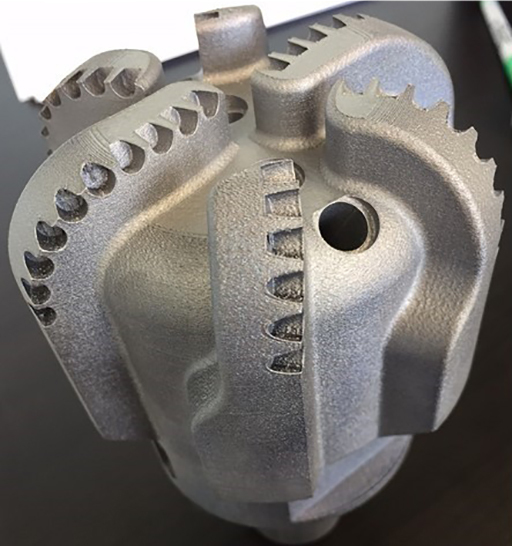As the largest oil and gas trade show in the world, the Offshore Technology Conference is a magnet for all parties interested in advancing energy technologies, efficiencies and innovation. Every year, over 50,000 people gather at OTC to be introduced to and explore the most advanced hardware and software for future impact in the industry.

Early this month, 3D Systems joined our partner MLC CAD Systems to start meaningful conversations around additive manufacturing with industry leaders. MLC CAD offers a capable array of CAD and CAM solutions ideally suited for the daily workflow of design and manufacturing environments. Because their software adapts well to both traditional and additive processes, MLC CAD featured both production options in their booth. Yet despite live demos of 5-axis milling for CNC drill bit heads, the real head-turner was the 3D printed titanium downhole drill bit off our ProX® DMP 320, printed by 3rd Dimension Industrial 3D Prinitng. Standing at 6.5 inches and weighing in at 7 pounds, the metal print was a testament to the spectacular quality and surface finish achievable on the DMP 320 as well as a nod to industry demands for new and improved manufacturing processes.
3D Systems’ Direct Metal Printing (DMP) technology spans several models and encompasses a wide array of pure metals and alloys. The ProX DMP 320 is particularly well suited for titanium and has also been optimized for stainless steel and nickel super alloys. To ensure metal purity, surface smoothness and overall part quality, the DMP 320 manufactures in an extremely low oxygen environment, pumping O2 out of the build chamber to levels as low as 25 parts per million. Once printed, optional heat treating can be done to increase tensile strength.

Alongside the titanium drill bit, we demonstrated two of our other 3D printing technologies: ColorJet Printing (CJP) and MultiJet Printing (MJP). These technologies are likewise advantageous within the design and manufacturing environment, with full color capability providing engineers with tangible maps for stress and heat visualization, and robust and durable MJP offering rapid form, fit and function testing.
As 3D printing continues to expand from prototyping to production, DMP holds a lot of promise for critical and specialized applications. For oil and gas, as well as other large scale, high investment operations, traditional methods can take as long as 3 months for a single part to be generated; our 3D printed titanium drill bit was prepped, built, and post-processed in under 40 hours. Reducing lead times for more productive and adaptive output is therefore a massive point of appeal for 3D printing. Design freedom is yet another. Industry regulations remain stringent, however, and parts must not only do the job they’re intended for, but they must do it safely and intelligently.
The animated and enthusiastic information sharing that emerged from our DMP demonstration has our wheels turning as we continue to explore the best untapped applications for our technology. Do you have any ideas? Reach out to us on social media and let’s keep this conversation going!